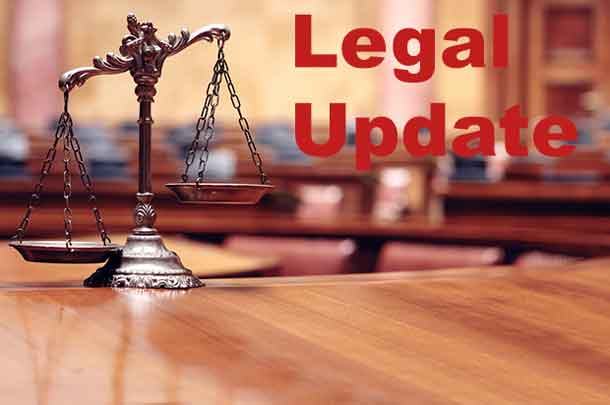WINNIPEG – In November 2018, Stoney Nakoda First Nation tribal member Rachel Snow was sued by her chief and council for defamation after she posted a series of comments on Facebook.
In her posts, Snow questioned their integrity and handling of band funds. In the defamation suit, Chief Aaron Young and all four of the band’s councillors asked for $100,000 each.
This is not the first time Stoney Nakoda First Nation has sued one of its citizens. Eight months earlier, in March 2018, band leadership sued Greg Twoyoungmen for $20,000 in damages after he posted comments online criticizing their business acumen and comparing them to a criminal organization.
These two lawsuits ask an important question: can governments in Canada sue citizens for things they say about them?
When it comes to federal, provincial, and municipal governments in Canada, the answer is no.
This was confirmed recently in two court decisions in Ontario, where the Niagara Peninsula Conservation Authority tried suing a private citizen named Ed Smith for raising concerns regarding conflicts of interest and the improper awarding of contracts at the government agency. The decisions stated that Smith could not be sued for raising a matter with “substantial merit” in the “public interest.”
For First Nations governments, however, First Nations citizens can and are being sued for expressing their opinions.
A large reason is that First Nations governments exist in an undefined, “grey area” in Canadian law. They’re partly independent entities and partly wings of the Canadian government – sort of like municipalities.
If you ask First Nations leaders, they claim our governments are autonomous, independent, and sovereign but the fact is the federal government – and namely, the Indian Act – refuses to allow them to be so.
If you ask First Nations leaders, they claim our governments are autonomous, independent, and sovereign but the fact is the federal government – and namely, the Indian Act – refuses to allow them to be so. The furthest First Nations governments have reached in Canada is “self-government agreements,” which permit First Nations to control minor things like membership, infrastructure, and programming.
At the same time, under the constitution, the federal government has to treat First Nations as somewhat independent when it comes to “Aboriginal and treaty rights” – and particularly on issues involving consultation.
So, are First Nations governments or not, Canada? If so, are they independent or not? And, perhaps the most important question of all: do First Nations governments answer to the Ministers of Indigenous Affairs or their citizens?
These “grey areas” in Canadian law create hundreds of weird situations.
Imagine a Canadian politician suing you for saying something bad about him or her online.
You get the picture. Governments suing citizens for their opinions not only silence debate and remove free speech but open the way for corruption and nefarious, backroom dealings.
It’s important to recognize most First Nations governments are ethical, responsible, and transparent with their citizens.
Stephen Harper’s First Nations Financial Transparency Act showed that, financially, there were about as many corrupt chiefs as cabinet ministers who take expensive joy rides on helicopters and buy $18 glasses of orange juice. In other words, the problem of funding First Nations communities isn’t financial corruption; it’s too many problems and too few resources.
Politically, First Nations leaders report more to their citizens then almost any Canadian leader. First Nations citizens see leaders every day and, if they don’t, they all know where they live.
Ethically, no government is more micro-managed than First Nation governments. Unlike any other government in Canada, First Nations governments have hundreds of eyes looking over reports on everything they do.
Politically, First Nations leaders report more to their citizens than almost any Canadian leader. First Nations citizens see leaders every day and, if they don’t, they all know where they live.
The problem is that in all governments everywhere, corruption occurs.
This is where media enters.
The difference is that we can’t access information from First Nations governments like we do with other governments. Virtually all public bodies in Canada are subject to the Freedom of Information Act, the law that ensures that matters of public interest be available to the public.
Of the 600 First Nations governments in Canada, around five have laws that grant members access to governmental information. No one seems to know whether First Nations governments fall under the Freedom of Information Act either. It’s another grey area.
That leaves reporters and columnists like myself with tough jobs.
We’re left to rely on hearsay, assumptions, and leaked information. The problem with these is that they often come with agendas that have to be vetted and triple-checked. This, in addition to politicians who don’t have to legally report anything to the public, results in a lot of conflict, confusion, and a public left to deduce what they can.
Ever wonder why Canadians think First Nations governments are corrupt and base this on false or little to no information? This is where this idea enters.
I haven’t even got to the large lobby groups, like the Assembly of Manitoba Chiefs or the Assembly of First Nations, which aren’t governments at all and don’t have legal requirements to report to anyone. If you want to see the problems with that, see the recent public concerns surrounding the alleged behaviour of AMC Grand Chief Arlen Dumas and how many times reporters say “requests for interview have gone unanswered” and “information was not available.”
The solutions lie in cleaning up the “grey area” First Nations governments reside in. For that, look no further than Canada, who created this situation and is in no hurry to change it.
I wonder who benefits as a result?
Oh yeah.
 Niigaan Sinclair
Niigaan Sinclair
Originally appeared in the Winnipeg Free Press on July 21, 2019. Republished with the permission of the author.
The views, opinions and positions expressed by all columnists and contributors are the author’s alone. They do not inherently or expressly reflect the views, opinions and/or positions of NetNewsLedger.







